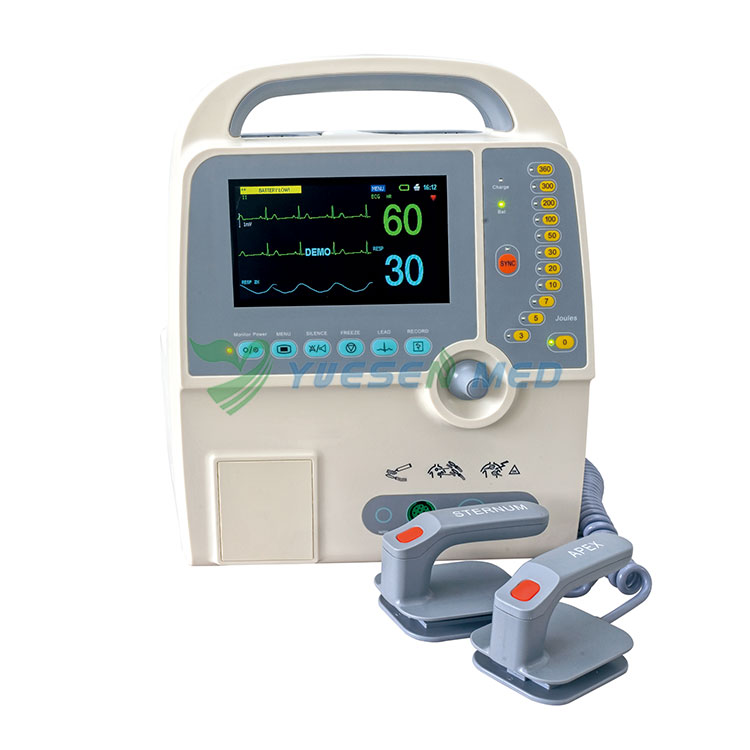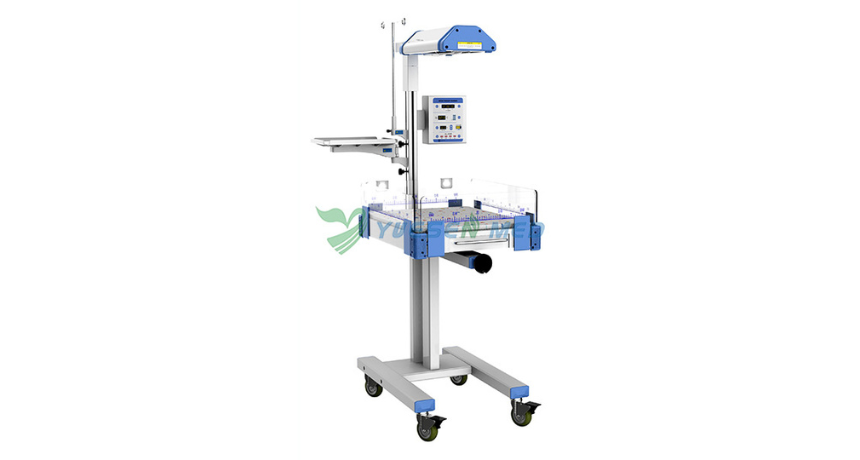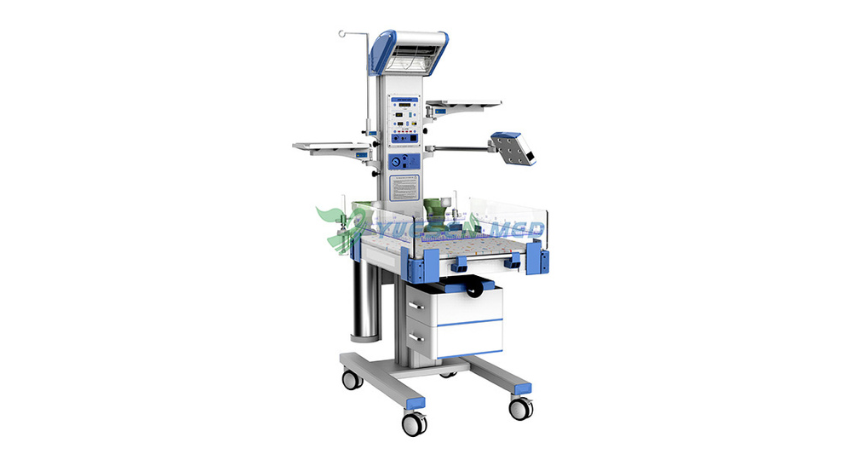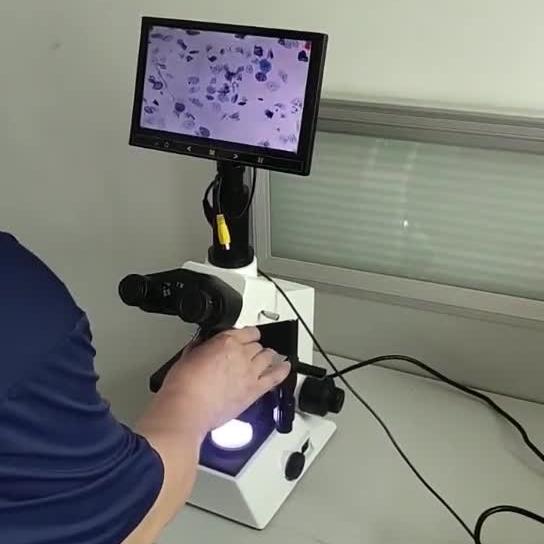Hot Products
YSX500D 50kW DR system set up and put into service in Cambodia.
YSENMED YSX500D 50kW digital x-ray system has been successfully set up and put into service in a hospital in Cambodia.
YSX056-PE serving as a vehicle-mounted x-ray in the Philippines
YSX056-PE 5.6kW portable x-ray unit has been adapted to fit on a truck, to provide mobile x-ray examination service for remote communities in the Philippines.
X Ray Machine To Zimbabwe
x ray machine, 50KW x ray machine
Microscope To Malawi
Achromatic objectives: 4X、10X、40X(S), 100X(S、Oil) Wide field eyepiece: WF10X(WF16X for option) Eyepiece head: Sliding binocular head inclined at 45° Stage: Double layer mechanical stage size 140X140mm, moving range 75X45mm Focusing: Coaxial coarse and
Saving Lives with Precision: The Role of Biphasic Defibrillators in the Operating Room
Views : 1904
Update time : 2024-08-15 10:33:59
When it comes to saving lives, every second counts, especially in the high-stakes environment of an operating room. One of the unsung heroes in this critical setting is the biphasic defibrillator. But what exactly is it, and why is it so crucial? Let's dive into the world of biphasic defibrillators and explore their pivotal role in modern medicine.

Understanding Defibrillation
What is Defibrillation?
Defibrillation is a medical procedure used to restore a normal heartbeat in patients experiencing life-threatening arrhythmias, such as ventricular fibrillation or pulseless ventricular tachycardia. Imagine your heart as a symphony orchestra; sometimes, it plays out of tune, and defibrillation is like a conductor stepping in to bring harmony back.
How Do Defibrillators Work?
Defibrillators deliver an electric shock to the heart, allowing it to reset its rhythm. The shock interrupts the chaotic electrical activity, giving the heart a chance to regain a normal rhythm. This process is crucial during cardiac arrest situations, where every moment is vital.
The Evolution of Defibrillators
From Monophasic to Biphasic
Historically, defibrillators were monophasic, delivering a single shock in one direction. However, biphasic defibrillators have revolutionized the field. They provide a shock that travels in two directions, which has been shown to be more effective at converting abnormal heart rhythms back to normal.
Why Biphasic is Better
Biphasic defibrillators have several advantages over their monophasic counterparts. They require lower energy levels to achieve successful defibrillation, leading to less damage to heart tissue. Think of it as using a gentle touch rather than a sledgehammer—more effective without causing collateral damage.
The Anatomy of a Biphasic Defibrillator
Key Components
A typical biphasic defibrillator consists of:
Pads or Paddles: These deliver the shock to the patient.
Control Panel: Allows medical personnel to adjust settings and monitor the patient's heart rhythm.
Battery: Ensures the device is always ready for action.
How It's Used in the Operating Room
In the operating room, the defibrillator is usually set up and ready for use. Surgeons and anesthesiologists are trained to respond swiftly, ensuring that the defibrillator can be used immediately if needed.
The Role of Biphasic Defibrillators in Surgery
Emergency Situations
During surgery, a patient's heart may suddenly stop or develop an irregular rhythm. In these moments, biphasic defibrillators can be lifesavers. The quick delivery of a shock can restore normal heart function, allowing the surgical team to continue their work.
Training and Protocols
Importance of Training Medical Staff
For biphasic defibrillators to be effective, medical staff must be well-trained. Regular drills and training sessions ensure that everyone in the operating room knows how to respond in an emergency. Imagine a fire drill; you practice so that when the real thing happens, you're prepared.
Protocols for Use
Hospitals typically have strict protocols regarding the use of defibrillators. These guidelines ensure that the device is used correctly and efficiently, maximizing the chances of a positive outcome.
The Impact on Patient Outcomes
Improved Survival Rates
Studies show that the use of biphasic defibrillators has significantly improved survival rates in cardiac arrest cases. The quicker and more effective delivery of shocks means more patients return to normal life after such traumatic events.
Quality of Life After Defibrillation
Not only do biphasic defibrillators save lives, but they also contribute to better post-resuscitation quality of life. Patients who receive timely and effective defibrillation often experience fewer complications and a quicker recovery.
Challenges and Considerations
Potential Risks
While biphasic defibrillators are generally safe, there are potential risks. Incorrect usage or failure to respond quickly can lead to adverse outcomes. This is why training and adherence to protocols are so crucial.
Future Developments
As technology advances, so do defibrillators. Future innovations may lead to even more effective devices with enhanced monitoring capabilities, making them even more valuable in the operating room.
Conclusion
In the fast-paced world of surgery, biphasic defibrillators stand out as essential tools for saving lives. Their ability to restore normal heart rhythms quickly and effectively can mean the difference between life and death. As we continue to advance in medical technology, the role of these devices will undoubtedly grow, further enhancing patient care in operating rooms worldwide. So the next time you hear about a biphasic defibrillator, remember: it's not just a machine; it's a lifeline.
FAQ
What is a biphasic defibrillator?
A biphasic defibrillator is a medical device used to restore normal heart rhythms in patients experiencing life-threatening arrhythmias. Unlike monophasic defibrillators, which deliver a shock in one direction, biphasic defibrillators send a shock that travels in two directions. This dual-phase shock is more effective and requires lower energy levels, reducing the risk of damage to the heart.
How does a biphasic defibrillator differ from a monophasic defibrillator?
The primary difference lies in the way the electrical shock is delivered. Biphasic defibrillators provide a shock that travels in two phases, while monophasic defibrillators deliver a single-direction shock. Research has shown that biphasic shocks are more effective at restoring normal heart rhythms and are associated with fewer complications.
When is a biphasic defibrillator used in the operating room?
Biphasic defibrillators are used in the operating room during emergencies when a patient experiences cardiac arrest or severe arrhythmias. In such situations, the surgical team can quickly assess the patient's condition and use the defibrillator to deliver a shock, aiming to restore a normal heart rhythm and ensure the surgery can proceed safely.
What training is required for medical staff to use a biphasic defibrillator?
Medical staff must undergo specific training to effectively use biphasic defibrillators. This training typically includes understanding the device's operation, recognizing when to use it, and practicing emergency response protocols. Regular drills and simulations help ensure that all team members can respond quickly and confidently during a real emergency.
Are there any risks associated with using a biphasic defibrillator?
While biphasic defibrillators are generally safe and effective, there are potential risks if not used correctly. Incorrect placement of pads, inappropriate energy settings, or delays in response can lead to adverse outcomes. Therefore, proper training and adherence to established protocols are essential to minimize risks and maximize the chances of a successful resuscitation.

Understanding Defibrillation
What is Defibrillation?
Defibrillation is a medical procedure used to restore a normal heartbeat in patients experiencing life-threatening arrhythmias, such as ventricular fibrillation or pulseless ventricular tachycardia. Imagine your heart as a symphony orchestra; sometimes, it plays out of tune, and defibrillation is like a conductor stepping in to bring harmony back.
How Do Defibrillators Work?
Defibrillators deliver an electric shock to the heart, allowing it to reset its rhythm. The shock interrupts the chaotic electrical activity, giving the heart a chance to regain a normal rhythm. This process is crucial during cardiac arrest situations, where every moment is vital.
The Evolution of Defibrillators
From Monophasic to Biphasic
Historically, defibrillators were monophasic, delivering a single shock in one direction. However, biphasic defibrillators have revolutionized the field. They provide a shock that travels in two directions, which has been shown to be more effective at converting abnormal heart rhythms back to normal.
Why Biphasic is Better
Biphasic defibrillators have several advantages over their monophasic counterparts. They require lower energy levels to achieve successful defibrillation, leading to less damage to heart tissue. Think of it as using a gentle touch rather than a sledgehammer—more effective without causing collateral damage.
The Anatomy of a Biphasic Defibrillator
Key Components
A typical biphasic defibrillator consists of:
Pads or Paddles: These deliver the shock to the patient.
Control Panel: Allows medical personnel to adjust settings and monitor the patient's heart rhythm.
Battery: Ensures the device is always ready for action.
How It's Used in the Operating Room
In the operating room, the defibrillator is usually set up and ready for use. Surgeons and anesthesiologists are trained to respond swiftly, ensuring that the defibrillator can be used immediately if needed.
The Role of Biphasic Defibrillators in Surgery
Emergency Situations
During surgery, a patient's heart may suddenly stop or develop an irregular rhythm. In these moments, biphasic defibrillators can be lifesavers. The quick delivery of a shock can restore normal heart function, allowing the surgical team to continue their work.
Training and Protocols
Importance of Training Medical Staff
For biphasic defibrillators to be effective, medical staff must be well-trained. Regular drills and training sessions ensure that everyone in the operating room knows how to respond in an emergency. Imagine a fire drill; you practice so that when the real thing happens, you're prepared.
Protocols for Use
Hospitals typically have strict protocols regarding the use of defibrillators. These guidelines ensure that the device is used correctly and efficiently, maximizing the chances of a positive outcome.
The Impact on Patient Outcomes
Improved Survival Rates
Studies show that the use of biphasic defibrillators has significantly improved survival rates in cardiac arrest cases. The quicker and more effective delivery of shocks means more patients return to normal life after such traumatic events.
Quality of Life After Defibrillation
Not only do biphasic defibrillators save lives, but they also contribute to better post-resuscitation quality of life. Patients who receive timely and effective defibrillation often experience fewer complications and a quicker recovery.
Challenges and Considerations
Potential Risks
While biphasic defibrillators are generally safe, there are potential risks. Incorrect usage or failure to respond quickly can lead to adverse outcomes. This is why training and adherence to protocols are so crucial.
Future Developments
As technology advances, so do defibrillators. Future innovations may lead to even more effective devices with enhanced monitoring capabilities, making them even more valuable in the operating room.
Conclusion
In the fast-paced world of surgery, biphasic defibrillators stand out as essential tools for saving lives. Their ability to restore normal heart rhythms quickly and effectively can mean the difference between life and death. As we continue to advance in medical technology, the role of these devices will undoubtedly grow, further enhancing patient care in operating rooms worldwide. So the next time you hear about a biphasic defibrillator, remember: it's not just a machine; it's a lifeline.
FAQ
What is a biphasic defibrillator?
A biphasic defibrillator is a medical device used to restore normal heart rhythms in patients experiencing life-threatening arrhythmias. Unlike monophasic defibrillators, which deliver a shock in one direction, biphasic defibrillators send a shock that travels in two directions. This dual-phase shock is more effective and requires lower energy levels, reducing the risk of damage to the heart.
How does a biphasic defibrillator differ from a monophasic defibrillator?
The primary difference lies in the way the electrical shock is delivered. Biphasic defibrillators provide a shock that travels in two phases, while monophasic defibrillators deliver a single-direction shock. Research has shown that biphasic shocks are more effective at restoring normal heart rhythms and are associated with fewer complications.
When is a biphasic defibrillator used in the operating room?
Biphasic defibrillators are used in the operating room during emergencies when a patient experiences cardiac arrest or severe arrhythmias. In such situations, the surgical team can quickly assess the patient's condition and use the defibrillator to deliver a shock, aiming to restore a normal heart rhythm and ensure the surgery can proceed safely.
What training is required for medical staff to use a biphasic defibrillator?
Medical staff must undergo specific training to effectively use biphasic defibrillators. This training typically includes understanding the device's operation, recognizing when to use it, and practicing emergency response protocols. Regular drills and simulations help ensure that all team members can respond quickly and confidently during a real emergency.
Are there any risks associated with using a biphasic defibrillator?
While biphasic defibrillators are generally safe and effective, there are potential risks if not used correctly. Incorrect placement of pads, inappropriate energy settings, or delays in response can lead to adverse outcomes. Therefore, proper training and adherence to established protocols are essential to minimize risks and maximize the chances of a successful resuscitation.
Related News
Read More >>
 Is an Infant Radiant Warmer Good for Babies' Health?
Is an Infant Radiant Warmer Good for Babies' Health?
Apr .13.2025
What exactly is the infant radiant warmer, and how does it contribute to a baby's health? Let's dive into this topic and explore the ins and outs of infant radiant warmers.
 What is an Infant Radiant Warmer?
What is an Infant Radiant Warmer?
Apr .12.2025
One of the unsung heroes in neonatal care is the infant radiant warmer. But what exactly is it? Let's dive into the world of infant care and explore the ins and outs of this vital device.
 Introduction video of YSENMED YSXWJ-BX301B Digital Biological Microscope.
Introduction video of YSENMED YSXWJ-BX301B Digital Biological Microscope.
Apr .01.2025
Here we share the introduction video of YSENMED YSXWJ-BX301B Digital Biological Microscope.
 YSDR-VET320 veterinary DR & YSB-DU10V color ultrasound serving well in Kiram Veterinary Surgery in Uganda
YSDR-VET320 veterinary DR & YSB-DU10V color ultrasound serving well in Kiram Veterinary Surgery in Uganda
Mar .31.2025
Kiram Veterinary Surgery in Uganda shares the clear images they have got from YSDR-VET320 veterinary digital x-ray system and YSB-DU10V vet color ultrasound machine.



